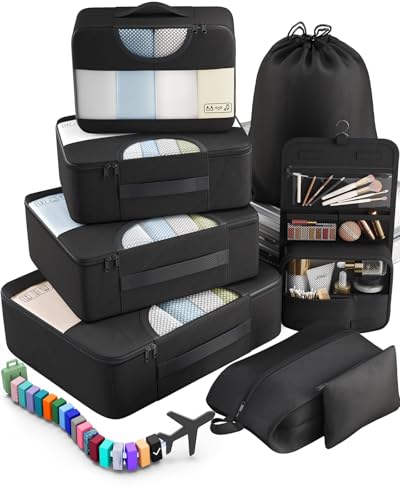In Réunion, they use Type C and E power plugs and outlets. The voltage is 230V, and the frequency is 50Hz.
So, you’ll need a travel adapter in Réunion. Their plugs and outlets are different from the Type A and B ones we use back in the States.
Quick Overview of the Plugs in Réunion:
- Plug type in Réunion: C and E
- Standard voltage: 230V
- Frequency: 50Hz
- Need a travel adapter? Yes, you do need a travel adapter
- Need a voltage converter? You might need one for certain items
- Recommended plug adapter: Vintar Universal Travel Adapter Kit
This page pulls data directly from local electrical authorities, global standards such as the IEC, and firsthand experiences shared by travelers.
The Only Travel Adapter You’ll Need in Réunion
Don’t gamble with your power supply abroad. We don’t sell travel adapters, but we’ve done the hard work to find the best one for Réunion—a tested, reliable, and safe option that lets you charge without worries. Travel smart and stay powered up with this top pick:
Recommended Travel Plug Adapter
by 1,000+ travelers on Amazon
No adapter in your bag? That’s okay—you can likely grab one after you land. But if you want to avoid the last-minute scramble next time, it’s worth getting one before you leave.
People traveling through Réunion often explore nearby islands like Mauritius, Mayotte, and Madagascar. Make sure your plugs are compatible across destinations.
Power Outlets in Réunion
In Réunion, they use Type C and E power plugs and outlets.
Type C

Type C outlets have two round prongs and no grounding pin. Type E and F plugs usually fit too, but grounded plugs will need an adapter.
Type E

Type E outlets have two round prongs and a grounding pin at the top. Type C and F plugs will also fit.
Do You Need a Voltage Converter?
A voltage converter is likely needed in Réunion because your device must match the country’s voltage. The U.S. runs on 120V, but Réunion uses a different voltage, so a converter is necessary.
Always double-check the label on your electronics before traveling abroad. If you see “100-240V, 50/60 Hz”, your device is built for global use and doesn’t require a converter. This applies to most smartphones, laptops, cameras, and rechargeable devices.

Which Travel Devices May Need a Converter?
Not sure which voltage converter to get? Take a look at the best-rated ones right here.
| Device | Need Converter? | Notes |
|---|---|---|
| Phone | ❌ No (usually) | Most modern phone chargers are dual voltage (100–240V) |
| Laptop | ❌ No (usually) | Check the power brick label for 100–240V |
| Hairdryer | ✅ Yes (often) | High wattage; many models are not dual voltage |
| Electric toothbrush | ⚠️ Check voltage | Some models are 110V only |
| Camera / DSLR | ❌ No (usually) | Most chargers are dual voltage |
| Power bank | ❌ No | Charges via USB, adapter is enough |
| Electric shaver / trimmer | ⚠️ Check voltage | Older or cheaper models may not support 230V |
| Tablet / iPad | ❌ No | All models are dual voltage |
| Portable fan | ✅ Yes (sometimes) | Many models are not compatible with 230V |
| Game console | ⚠️ Check voltage | Newer consoles like PS5 and Xbox are often dual voltage — check to be sure |
| Bluetooth speaker | ❌ No (usually) | Charges via USB |
| E-reader (Kindle, etc.) | ❌ No | USB charging only, no converter needed |
Top Travel Essentials to Pack
Packing smart means thinking ahead. These extras don’t take much space, but they can make your trip a lot more comfortable.
Digital Luggage Scale
Packing Cubes
Power Bank
More About Réunion
Réunion packs an entire continent’s worth of adventure into just around 640 mi²—about the size of Rhode Island. There’s everything from rugged volcanoes and lush rainforests to quiet mountain valleys and coral beaches—all on one island. About 900,000 people live here, mostly in Saint-Denis and coastal towns, but nearly half the island is protected wilderness.
Volcano lovers, rejoice—this island is home to Piton de la Fournaise, one of the most active volcanoes on the planet, erupting almost once a year with huge, lava-spewing displays. In contrast, Piton des Neiges—the island’s roof—hits about 10,069 ft (3,070 m) but is long dormant. All that geology happens within a UNESCO-listed national park that covers Cilaos, Mafate, and Salazie cirques—insane diversity in every direction.
What really sets Réunion apart is its cultural mix—French Creole, Indian, Chinese, African—you name it. You’re just as likely to find samoussas, curries, and bouchons on a table as French wine or a Creole rum punch made with local fruits. Adventure seekers can hike through dinosaur-like lava tubes, canyon through waterfalls, surf waves off the west coast, or catch humpback whales offshore in the winter months. All that without the crowds—you’ll bump into more locals than influencers. A seriously under-the-radar gem that feels a bit like Hawaii got sprinkled into the Alps.
Top places to visit in Réunion: Saint-Denis, Saint-Gilles-les-Bains, Cilaos, Mafate, and Piton de la Fournaise.




